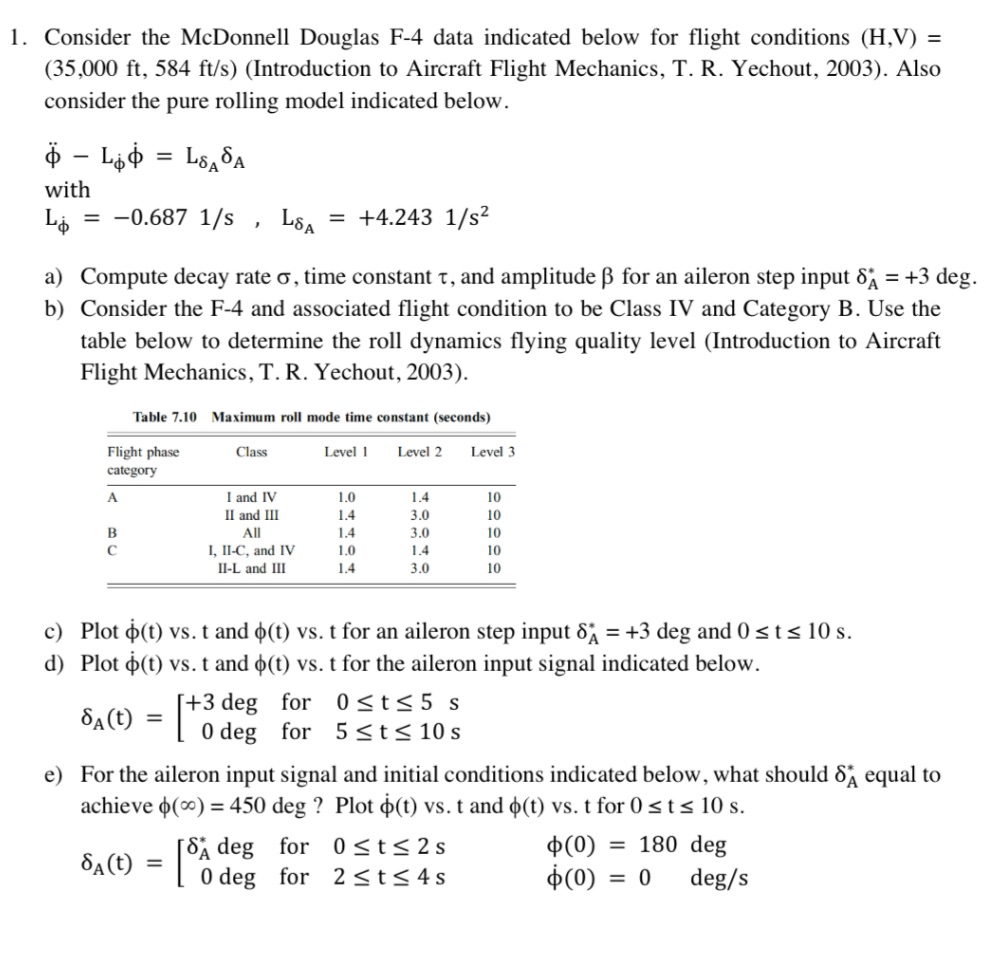Answered step by step
Verified Expert Solution
Question
1 Approved Answer
1. Consider the McDonnell Douglas F-4 data indicated below for flight conditions (H,V) = (35,000 ft, 584 ft/s) (Introduction to Aircraft Flight Mechanics, T.

1. Consider the McDonnell Douglas F-4 data indicated below for flight conditions (H,V) = (35,000 ft, 584 ft/s) (Introduction to Aircraft Flight Mechanics, T. R. Yechout, 2003). Also consider the pure rolling model indicated below. - = with Li = -0.687 1/s LSA = +4.243 1/s a) Compute decay rate , time constant t, and amplitude for an aileron step input 8 = +3 deg. b) Consider the F-4 and associated flight condition to be Class IV and Category B. Use the table below to determine the roll dynamics flying quality level (Introduction to Aircraft Flight Mechanics, T. R. Yechout, 2003). Table 7.10 Maximum roll mode time constant (seconds) Flight phase category A Class Level 1 Level 2 Level 3 I and IV 1.0 1.4 10 II and III 1.4 3.0 10 B All 1.4 3.0 10 C I, II-C, and IV 1.0 1.4 10 II-L and III 1.4 3.0 10 c) Plot (t) vs. t and o(t) vs. t for an aileron step input 8 = +3 deg and 0 t 10 s. d) Plot (t) vs. t and o(t) vs. t for the aileron input signal indicated below. 8(t) = [+ [+3 deg for 0t5 s 5t 10 s 0 deg for e) For the aileron input signal and initial conditions indicated below, what should SA equal to achieve () = 450 deg? Plot (t) vs. t and o(t) vs. t for 0 t 10 s. deg for 0t2s 8A(t) = 0 deg for 2
Step by Step Solution
There are 3 Steps involved in it
Step: 1
Solutions Step 1 To compute the response t for an elevator step EtE in terms of the given parameters ...
Get Instant Access to Expert-Tailored Solutions
See step-by-step solutions with expert insights and AI powered tools for academic success
Step: 2

Step: 3

Ace Your Homework with AI
Get the answers you need in no time with our AI-driven, step-by-step assistance
Get Started


